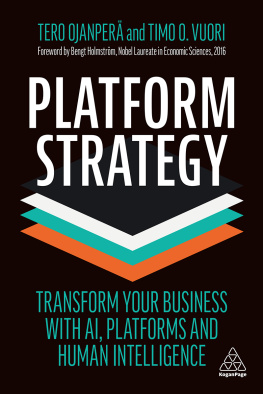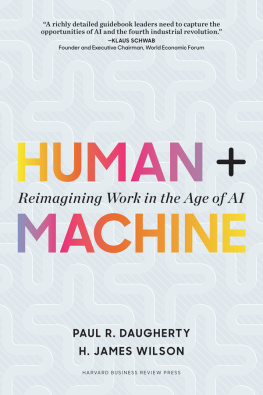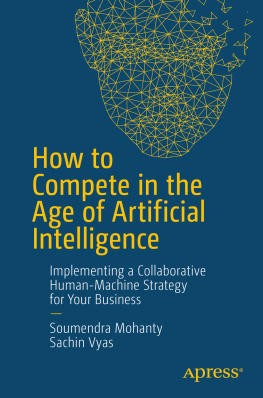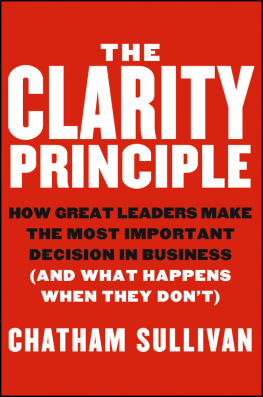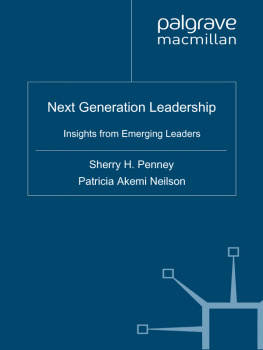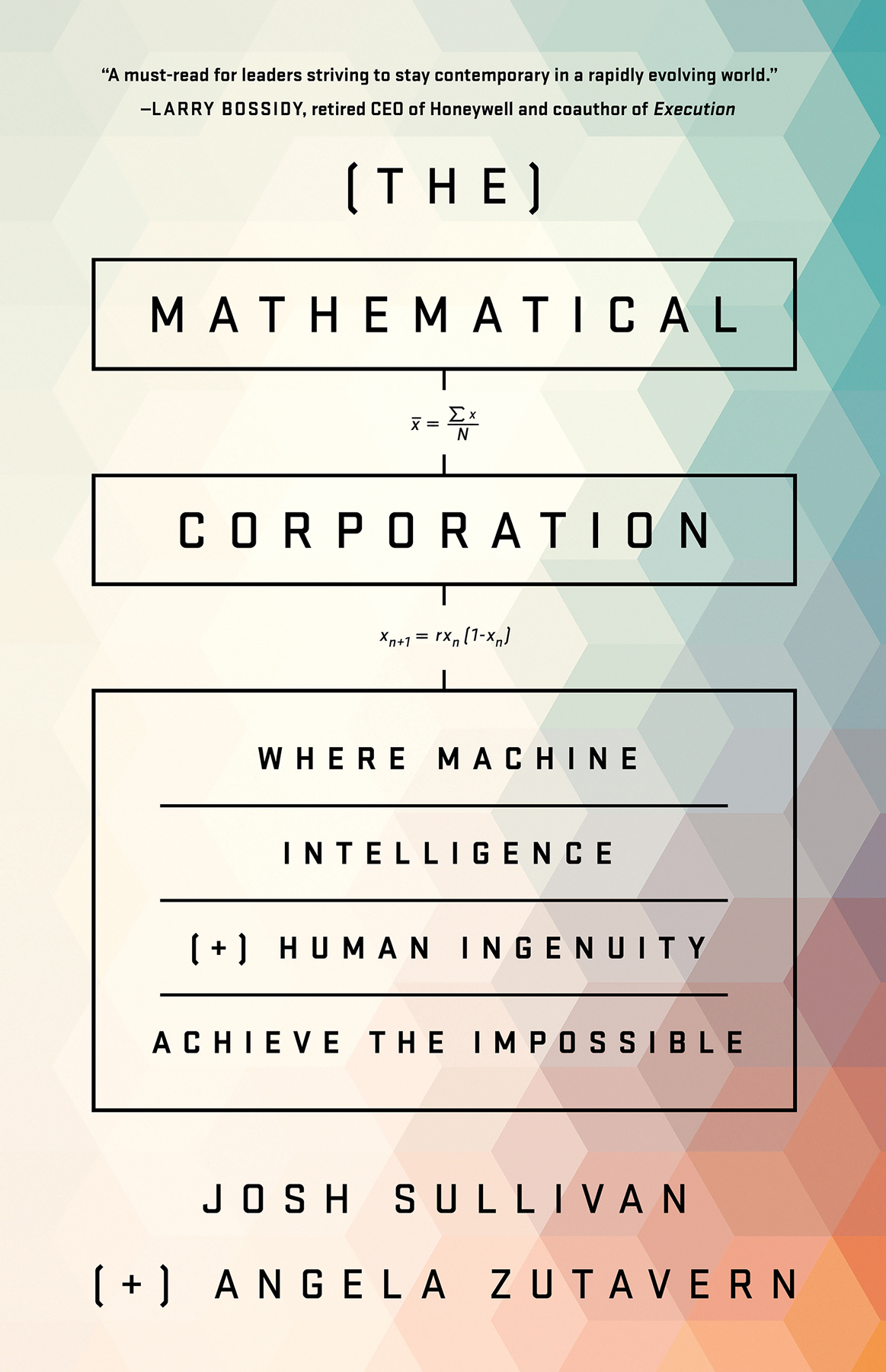Published by PublicAffairs, an imprint of Perseus Books, LLC, a subsidiary of Hachette Book Group, Inc.
All rights reserved.
No part of this book may be reproduced in any manner whatsoever without written permission except in the case of brief quotations embodied in critical articles and reviews. For information, address PublicAffairs, 1290 Avenue of the Americas, New York, NY 10104.
PublicAffairs books are available at special discounts for bulk purchases in the U.S. by corporations, institutions, and other organizations. For more information, please contact the Special Markets Department at Perseus Books, 2300 Chestnut Street, Suite 200, Philadelphia, PA 19103, call (800) 810-4145, ext. 5000, or e-mail special.markets@perseusbooks.com.
A CIP catalog record for this book is available from the Library of Congress.
To all the courageous, inspiring clients weve had the pleasure of knowing. Your work across the corporate, government, and nonprofit worlds is changing everything.
I MAGINE YOU ARE FLYING OVER A MAJOR CITY AT NIGHTSAY , Chicago or Paris or Beijingand it is completely dark below. All you see is a void of light akin to nighttime in the middle of the ocean. Then imagine that, as youre looking down, someone flips on the power grid, and you see todays web of human activity light up. Imagine further that someone flips the switch again, and you glimpse a future image of the city. Where you once thought there was nothing, you see a universe of actionboth present and future. Enormous detail radiates from the darkness, and you perceive and envision features you never knew existed.
This ability to flip the switch to see formerly hidden detail and vital insights about the future expresses the potential of the mathematical corporation. Thanks to leaps in technology, we can get a new fine-grained, high-resolution picture of aspects we could never distinguish before. With machine intelligence, built on the bundle of technologies known as data science, we can see patterns, anomalies, and associations that were previously cloaked in obscurity.
But this ability stems not just from technology. It also results from a new form of leadership. This is the type of leadership that illuminates the darkness by shattering constraints on thinking you may have long acceptedabove all, the rigid belief that the best decisions always result from intuition and experience. As these constraintsthose you recognize and those you do notfall, every system and business process in your organization will reverberate with change. Every strategy in every industry will fundamentally shift.
Five years ago, we set out to discover how technology combined with new forms of leadership and faster innovation would affect business, government, and nonprofit organizations. After researching hundreds of organizations, we have distilled the elements that comprise the model of winning organizations of the future, organizations we call mathematical corporations.
We dub this new kind of organization the mathematical corporation because it is driven by data. The data feed ingenious algorithms. And when you lead this kind of organization, you practice a new kind of scientific management infused with inspirational leadership and purpose.
The mathematical corporation does not just look back at what successful companies have done. A backward look cannot hold the secrets to future results because new technology and thinking create breakthroughs that couldnt be conceived in the past. A forward look, revealed through examples of pioneers experimenting on the horizon, is the road map to success.
Indeed, a forward look reveals required skills, emerging strategies, innovative technology, and lessons learned about cultivating talent and organizational change. This forward look provides a guide to thinking and acting as a leader, in particular, developing what we call future power. Future power is the ability to apply specific leadership techniques in league with machine intelligence technologies to see future possibilities and shape the future.
No organization today is a mature mathematical corporation. Thats because becoming one is not as easy as flipping the switch. But a number of leaders have put the critical pieces in placecombining new thinking, new applications of data, and advanced computation to take advantage of opportunities that emerge as a new era unfolds. These leaders understand that their innovations in technology and strategy are overturning old approaches in the same way that the quality movement in the 1980s and the Internet in the late 1990s changed everything.
This transformation, a shift to embracing complexity to reveal truths and predict future possibilities and outcomes, demonstrates the significance and power of the mathematical corporation. Once you break constraints you may not even know exist, you can tap machines to predict the course of events. You can conceive of advances you didnt think of before. And you can unleash your imagination to prescribe solutions to problems that werent formerly apparent.
The leaders of mathematical corporations of course use analytics and big data as well as artificial intelligence and other advanced technology. But the capabilities of the mathematical corporation extend beyond mining big data sets, a decade-long endeavor that has focused organizations narrowly on answering known questions by querying specific, often proprietary, piles of data.
The mathematical corporation focuses also on answering unknown questions by querying a universe of datamore open and ubiquitous all the time. By searching for and answering questions outside the spotlight of conventional thought, it provides knowledge about the future, breaking through the darkness of past constraints. From an expanded grid of detail, to which you apply new thinking and new approaches to knowledge discovery, the mathematical corporation opens up choices and lines of decision making you never had before.
If the past was about analytics and big data, the future is about the big mind of the mathematical corporation. Big mind comes from combining the mathematical smarts of machines with your own imaginative intellect. And this triggers the next leap in organizational performance.
Big mind may help you identify hacking in your financial system that was once too subtle to see. Or discover new energy sources that eliminate batteries and wires. Or find hiccups in your global supply chain that propel warranty claims. Or identify flaws in company policies that spur employee healthcare costs. Or produce as yet unsynthesized materials that double the service life of products from tires to artificial hips. Or launch new businesses for which machine and human intelligence embedded in softwareas in self-driving trucksproduces ten times the value of the base product itself.
Big mind may also help you determine how epidemics start and how to stop them. Or predict why crime waves sweep certain locales and show how to prevent them. Or analyze megacity traffic bottlenecks and devise how to eliminate them. Or address global conundrums like poverty, terrorism, and climate change.
In the pages ahead, we describe leaders who are addressing just these types of problems. At companies like Merck and InterContinental Hotels Group and Bloomberg LP. At government agencies like the US Census Bureau, Federal Aviation Administration, and US Army. At nonprofits like Polaris, the antihuman trafficking organization, and the Simon-Skjodt Center for the Prevention of Genocide. Leaders at these organizations have convinced usand they will convince youthat developing the big mind of the mathematical corporation is inevitableand imperative.



